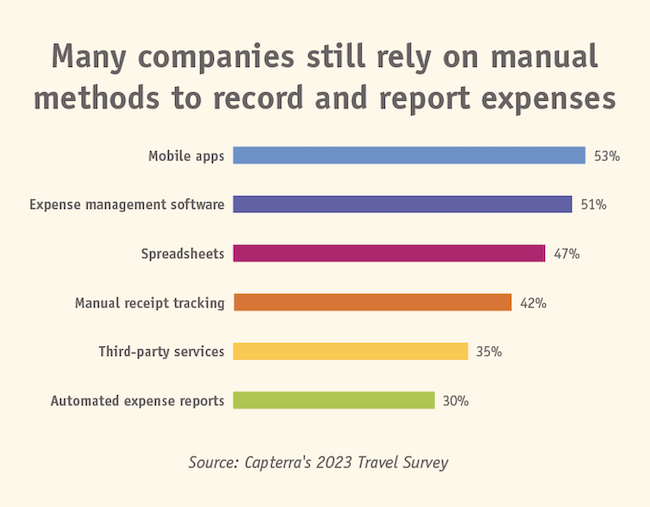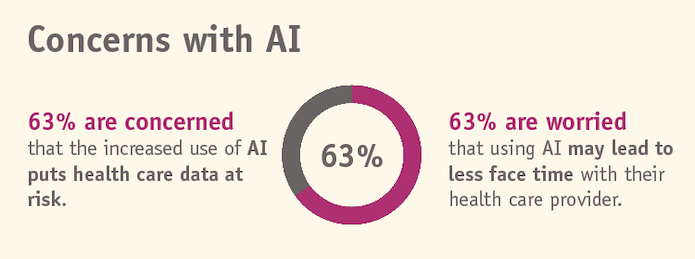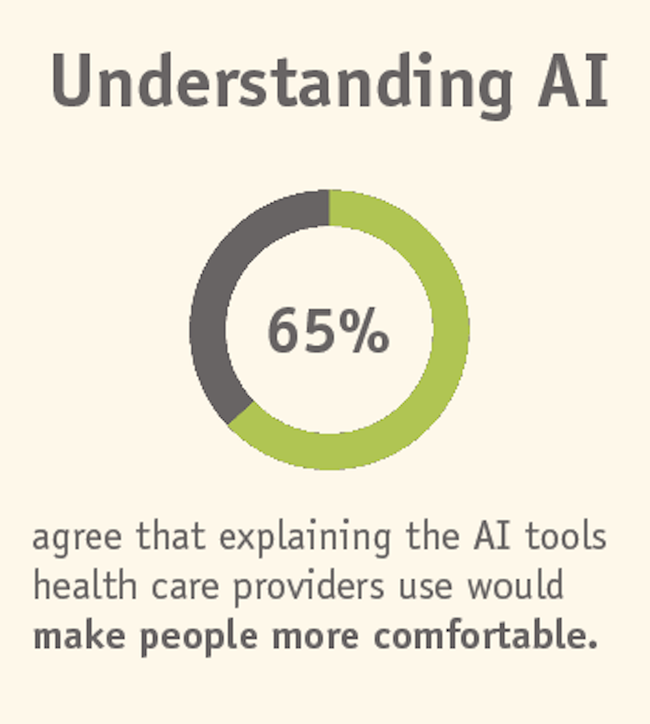••• employee research
Education vs. experience
Employees feel unprepared to enter the workforce
When it comes to transitioning into the workforce, e-learning provider Go1 found that 46% of employees believe university failed to prepare them for their current jobs, with 61% saying previous work experience best prepared them for their current positions. This was followed by formal on-the-job training (41%) and life experience (37%).
When asked what they wish they had known before entering the workforce, 50% of employees said they would have liked to know how to approach career progression, the fundamentals of the role (32%) and how to collaborate with people in other departments (31%).
When deciding where to work or whether to stay at a job, 66% of employees say learning and development opportunities are essential and valuable. While increasing their salary potential is the top motivator to acquire new skills for Gen Z employees (45%), general personal development is the top motivator for Baby Boomer (62%), Gen X (55%) and Millennial (51%) employees.
Seventy-three percent of employees believe that their current employer offers learning and development programs that adapt to or accommodate their specific needs. In fact, over half (59%) feel empowered to ask for better learning and development programs suited to their specific needs.
However, organizations approaching learning and development as a “box-ticking exercise” is the biggest frustration for employees (30%), followed by learning content that is boring (27%), not personalized (24%) or too long (24%). In addition, employers may not be giving their employees enough growth opportunities, with 44% agreeing that their organization doesn’t make the most of its potential for upskilling and growth.
Organizations are effectively creating opportunities for people to work and learn with different age groups, with 46% agreeing they have opportunities to do so often. Learning from their wealth of experience (60%), having more diverse perspectives (59%) and the opportunity to learn from them (57%) are the top benefits of a generationally diverse team.
When asked about the downsides of working with people from different age groups, people stuck in their own ways (45%) and different work ethics (41%) were considered the top drawbacks. Fifty-three percent also believe they learn differently compared to work in other age groups at the company.
As AI technology continues to permeate businesses and industries, employees are leaning towards optimism when it comes to the impact on their work and ability to learn. Forty-eight percent of employees are open to using AI-generated learning materials or using AI tools to help them learn, while 45% of employees agree or completely agree that AI will help them develop skills needed in the workplace more quickly.
In addition, using generative AI (44%) and finding information more quickly (46%) were named the top skills needed to stay ahead of the AI curve. Younger workers are more likely to see AI as critical to their development, with Gen Z employees (31%) and Millennials (31%) looking to generative AI as the only learning tools they need, compared to 18% of Gen X and 12% of Baby Boomer employees.
The Go1 survey was conducted by Method Research and distributed by PureSpectrum among 3,000 adults aged between 18-75 who work full-time at office/desk-sitting jobs across Australia, the U.S. and the U.K.
••• small business research
Lagging behind
Shoppers need up-to-date technologies
Small businesses lack the convenience Gen Z and Millennials expect, according to website services company GoDaddy. Ninety-one percent of U.S. small business survey respondents say they offer customers a convenient online experience yet only 21% of consumers – and just 19% of Gen Z – feel that's the case.
While small businesses identified Gen Z and Millennials as top target audiences, their current practices tend to cater more to older generations. Gen Zs (73%) and Millennials (75%) say they would shop more at small businesses if they offered the same convenience as larger chain stores.
Seventy-three percent of Gen Z and 83% of Millennials enjoy a "buy online, pick up in-store" option but only 34% of small businesses offer it. Eighty-five percent of Gen Z and 82% of Millennials want small businesses to accept contactless digital payments, yet 27% of small businesses do not accept them.
Unsurprisingly, 90% of consumers say it's important that small businesses offer free shipping, yet 38% of small businesses do not. Eighty-nine percent say small businesses should have websites, as Gen Z (55%) and Millennials (61%) would make purchases from it. However, many small businesses indicate not having a website (24%) or an online store (28%).
The overwhelming majority of young consumers (80% of Gen Z and 75% of Millennials) say it's crucial for small businesses to have storefronts linked to their social pages for easy shopping. Small businesses say they are primarily using their social accounts for brand awareness over sales. Only 25% use social media to sell physical products and 19% use it to sell digital products. Forty-one percent of Gen Z and 43% of Millennials have followed a brand on social media for a discount but 47% of small businesses don’t offer discount codes when someone follows them.
Although nearly all small businesses (91%) agreed it's important to make sure their business is keeping up with tech innovations, they are not quite meeting the high expectations of an increasingly tech-savvy consumer base. When using a debit or credit card, a greater percentage of younger consumers say they prefer paying via tap-to-pay compared to older generations (50% of Gen Z, 31% of Millennials, 23% of Gen X and 18% of Baby Boomers).
When asked if it's important that small businesses accept contactless digital payments, Gen Z (85%) and Millennials (82%) took the lead. Sixty-seven percent of Gen X and 40% of Baby Boomers believe contactless payments are needed while 33% of Gen X and 60% of Baby Boomers do not think they are important.
This survey was conducted with 1,000 U.S. consumers and 1,000 U.S. small business owners.
••• education research
Looking beyond tuition
Students and parents evaluate higher-ed options
Despite many media narratives blaming the rising cost of college for the public’s disillusionment with higher education, marketing firm Spark451 found that while money was an influencing factor in the college decision process, it wasn’t the most important one.
The leading deciding factor for parents and students when making their college decision was academic quality with cost/financial aid coming in second. When asked if the college their child selected was the most affordable, 56% of parents said no. Thirty percent said they would have encouraged their child to select a different school if money were not a factor. Fifty-five percent of students applied to schools because they received an application fee waiver and 45% applied to the same number of institutions, even if they weren’t offered waivers. Sixty-five percent of parents said they would not make a college decision based on a state’s political stance while 50% of students said a state’s political leanings would influence their choice.
Students listed e-mails as their preferred method of communication with an institution, with text messaging ranking second. Despite this preference, many students say they don’t open e-mails that are sent to them. Twenty-seven percent of students say they didn’t open e-mails because they look generic and not personalized. Fifty-nine percent believe they would open an e-mail from a school they did not know if the topic or offer presented was of interest to them. When asked which print materials influenced them the most, students said personalized letters were the most effective, followed by personalized brochures. Parents answered the same.
High school students began the college search process during their junior year, giving them considerable time to view a variety of materials and to form strong opinions on the marketing tactics they had seen. When it comes to selecting the right college, high school seniors and their parents conduct different kinds of research. When seeking information about a preferred university or looking for answers to a question about an institution, the most accessed source was the college’s website. Throughout the college selection process, students were more likely to utilize Instagram as their preferred social media outlet and parents were most likely to use Facebook. Eighty-four percent of students said that visiting campus was a part of their college search process.
This survey was conducted in the summer of 2023 among a randomized selection of high school seniors and parents of graduating high school seniors across the U.S.
••• travel research
Bleisure travel takes off
Accurate recordkeeping, not so much
Despite rocky economic conditions and pressures within organizations to cut down on travel costs, business travel is making an unexpected and robust comeback. According to software and business services company Capterra, 46% of business travelers report going on more trips than before the pandemic. On average, they travel six times a year, with trips lasting about three days.
Seventy-one percent of companies indicated having spent over $10,000 on business travel in 2022. Increased travel expenses underscore the importance of accurate reporting, as manual tracking leads to errors and fraud that can cost thousands or even millions of dollars. Ninety-two percent of travelers encountered issues with expense reporting, with 90% admitting to making mistakes during the process. While technology adoption is evident with over half of travelers using mobile apps (53%) or software (51%), 42% still track receipts manually. Forty-seven percent of respondents use spreadsheets, 35% use third-party services and 30% use automated expense reports.

Business travelers report numerous mistakes with manual entry including missing receipts (41%), incomplete information (29%), duplicated expenses (24%) and miscategorized expenses (21%). Twenty percent admit they’ve submitted reports that don’t meet company policies and 18% say they struggle with following and understanding their company expense policies.
Even with the rising costs and potential financial errors, travel is necessary for business growth, especially as businesses move to in-person and hybrid models and therefore want more in-person meetings. In fact, over half of travelers schedule their trips for client meetings (52%), as well as networking conferences (52%), training (50%) and trade shows (31%).
As an added benefit, almost all (93%) business travelers say they merge personal vacation time with work trips, which may help boost morale and decrease burnout from frequent traveling. Travelers are largely driven by the need for work-life balance (52%). Employees say they visit historical sites (31%), catch up with friends and family (30%) and attend cultural events (25%) during their off time.
Capterra’s Travel Survey was conducted in July 2023 among 398 business travelers in the U.S.
••• generational research
Grandpa’s got this
Boomers embracing, advocating for new tech
Despite Baby Boomers’ affluence and affinity for technology and digital experiences, just 6% of marketers identify the cohort as a part of their marketing initiatives, with most opting to “age down” their brand. According to the findings from marketing agency Razorfish, marketers may be neglecting some of their wealthiest potential customers who have the promise to become loyal and enthusiastic brand advocates.
Most Baby Boomers (70%) are curious about new technology and devices and are eager to learn how to use them either by reading about them in the news or trying them out for themselves. They are most interested in devices like laptops, smartphones, smart doorbells, locks and security cameras.
More notably, Baby Boomers (70%) aren’t intimidated or overwhelmed by new technology. They also serve as the biggest advocates for products with more than 30% stating that they love sharing new technology and apps with people close to them.
Technology enriches the full scope of their lives. Baby Boomers value technology’s assistance in many aspects of their lives, believing that it is most important when managing their money (73%), staying informed on current events (69%), keeping their homes secure (59%), for entertainment purposes (58%) and when shopping for products (57%).

Baby Boomers do not rely on younger generations to evaluate the best products and applications. Most will take the initiative to visit brands’ websites (71%) and read reviews online (56%) when making new purchases.
Online tools and positive digital experiences are a significant part of the shopping journey. Nearly three-in-four Baby Boomers research major purchases like kitchen appliances and other expensive devices online and one-in-four eventually buy these products online. While the majority still make large purchases in person, they are open to moving this experience online.
Despite common misconceptions, gamification is a key consideration in how Baby Boomers evaluate digital experiences. They expect mobile apps to be fun, intuitive and personalized and are likely to abandon apps that don’t meet these criteria or are too complicated and lack guidance. Their favorite brands also align with younger generations, with Baby Boomers more likely to shop on Amazon (80%) than Gen Z (62%) and Millennials (70%).
Razorfish partnered with GWI to conduct this survey with 1,003 U.S.-based Baby Boomer respondents.
••• health care research
For some patients, AI is not OK
Lack of trust leads to tech limitations

The health care industry benefits greatly from AI but to successfully integrate it into business operations, it must be understood by patients and health care practitioners. Carta Healthcare found that on average, three-in-four Americans do not trust AI in a health care setting. Nearly four-in-five patients in the U.S. report not knowing if their provider is using AI when in reality, 100% of health care providers are using AI and have been for a long time. This discrepancy illustrates the public’s misperception of the use of this technology, which is made evident by the 43% of respondents who admit there are limitations in their understanding of it.
Most Americans are unaware of AI usage and consider disclosure important. While most respondents don’t know whether their health care providers use AI, they are torn about whether they would be comfortable with it – 49% say yes and 51% say no – even if it would help improve diagnostic accuracy (51% say yes, 42% say no). Two-in-five agree that their health care provider can provide better information than AI tools and one-in-three feel that AI tools can provide the same level of information as their health care provider. Twenty-five percent of respondents say that AI tools can provide better information than their health care provider.
Regardless of actual usage, there is still disbelief and concern. Sixty-one percent trust that their provider would be able to use it properly, while 63% are concerned that the increased use of AI puts health care data at risk. Sixty-three percent are also worried that the use of AI may lead to less face-to-face time with their health care provider.

Patients need disclosure; the vast majority (80%) report that their knowledge of AI use within a practice is important for improving their comfort. Trust in AI is low, but Americans are willing to educate themselves.
The survey also indicates low sentiment from health care consumers in terms of trusting and understanding AI. Only 38% of Americans trust AI and 57% feel they have a good understanding of it and how it’s used in health care. However, Americans are open to learning more and indicate that a better understanding of it may improve their level of trust and comfort. Forty-seven percent feel that if they were to learn about it, they would be more likely to trust it. Sixty-five percent reported that if they were to have an explanation of the use in AI from their health care providers, it would make them more comfortable with it.

Forty-six percent say health care visits have gotten longer in the last two years and three-fifths believe that AI could be useful to assist with the shortage of health care workers.
Carta Healthcare, in partnership with Prosper Insights, commissioned an online survey of 1,027 U.S. consumers between August 18-29, 2023.